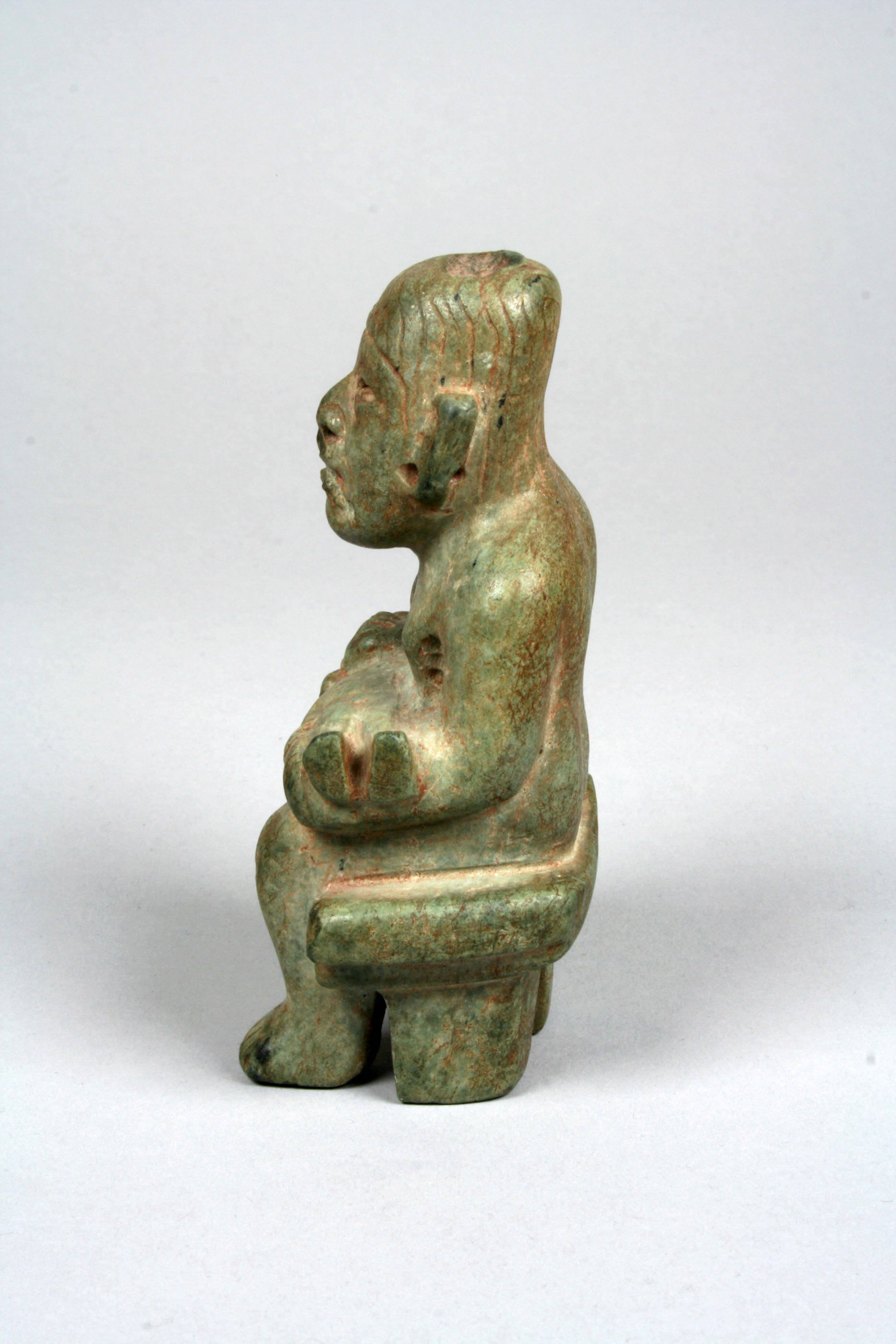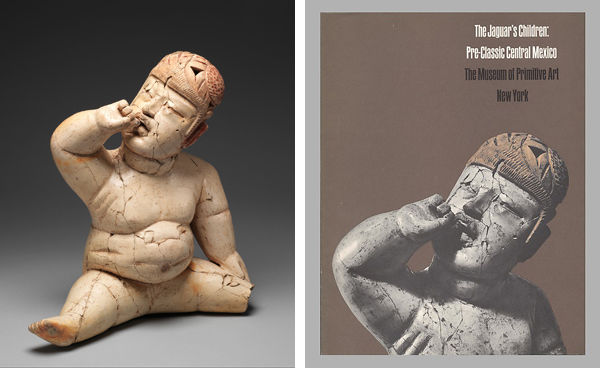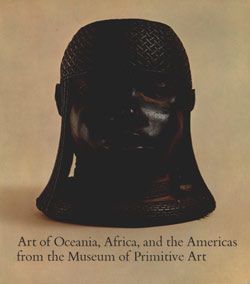Seated Bench Figure
Not on view
This serpentine figure shows an individual seated on a bench cradling a baby in his arms. The distinctive shape of the throne is known to depict a cloud motif, similar to monumental reliefs carved at the site of Chalcatzingo, Morelos, Mexico. The main personage sitting on the cloud throne has a large head with an incised hairstyle, and his oversized ears have drilled lobes, presumably for the insertion of removable ornaments. The baby itself is minimally adorned, but resembles babies known as the "were-jaguar" infants. Such supernatural babies play a significant role in Olmec art., and often have feline features such as fangs and slanted, almond-shaped eyes.
The Met's small-scale figurine is similar in theme to the famous Señor de las Limas, a cross-legged individual cradling a "were-jaguar" infant across his lap. This infant has defined limbs and a sloping head with an incised cleft. Other babies with cleft heads have been identified as personified maize sprouts, a concept that persisted into the beliefs of the much later Classic Maya, who referred to youths as "ch'ok" or "sprout." The body of the main figure is incised with mythological characters on his shoulders and knees, emphasizing the Mesoamerican belief in the four corners and a center as an organizing principle of the Olmec worldview. The baby, this maize sprout made manifest, then stands in for the center of the world. The preoccupation of Olmec peoples with child-rearing and the mythological connections between the life cycles of infants and agriculture transcend time and space.
Resources and Additional Reading:
Benson, Elizabeth P., and Beatriz de la Fuente, eds. Olmec Art of Ancient Mexico. Washington: National Gallery of Art, 1996.
Berrin, Kathleen, and Virginia Fields, eds. Olmec Colossal Masterworks of Ancient Mexico. Los Angeles: LACMA, 2010.
Doyle, James A. http://www.metmuseum.org/about-the-museum/now-at-the-met/2015/olmec-babies
Due to rights restrictions, this image cannot be enlarged, viewed at full screen, or downloaded.
This artwork is meant to be viewed from right to left. Scroll left to view more.







